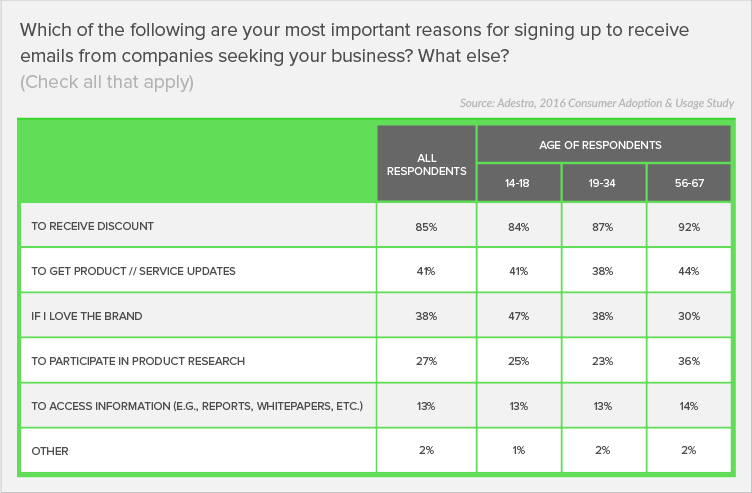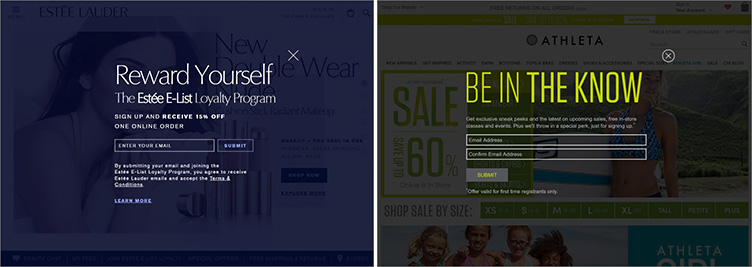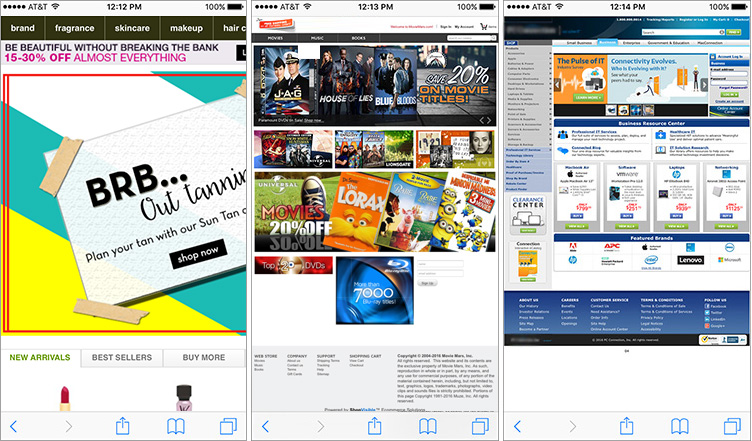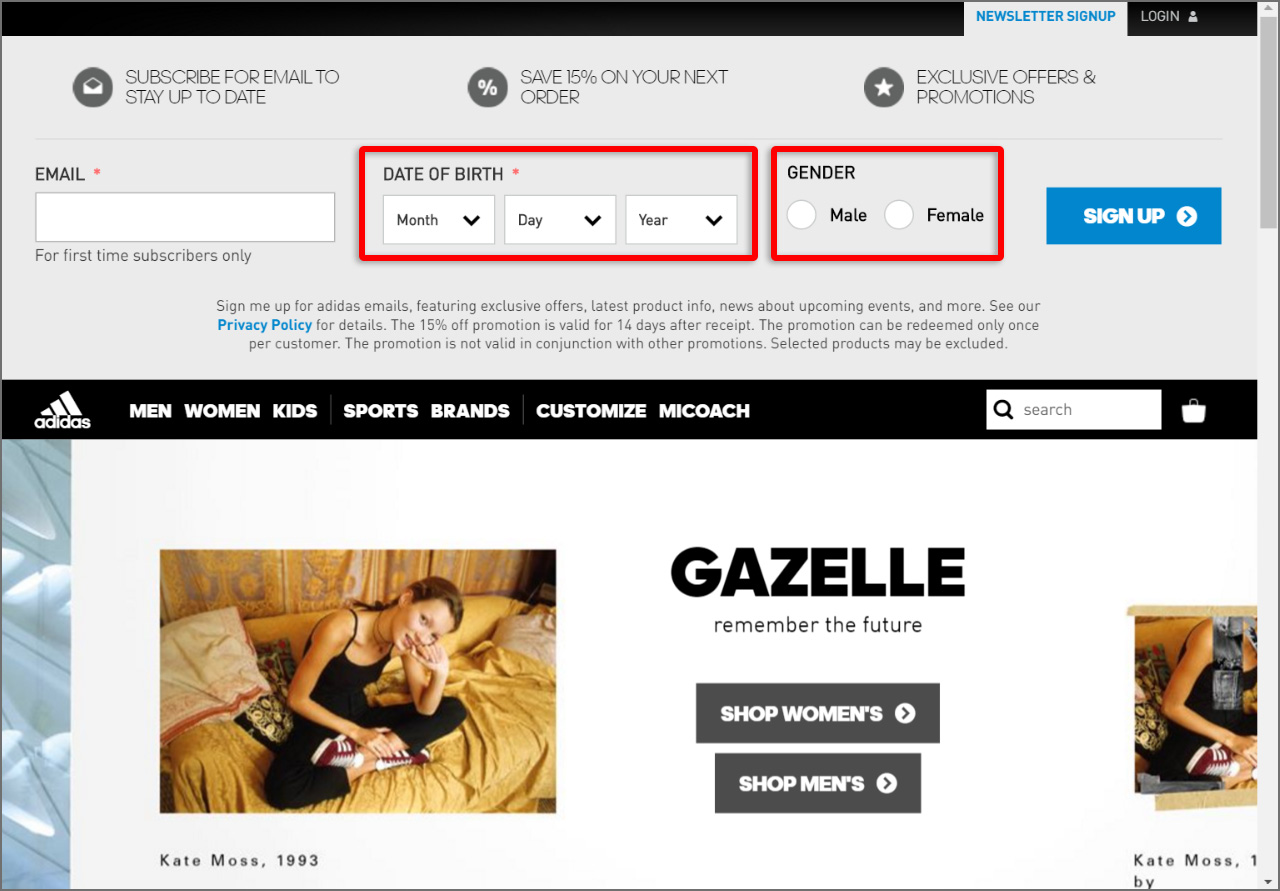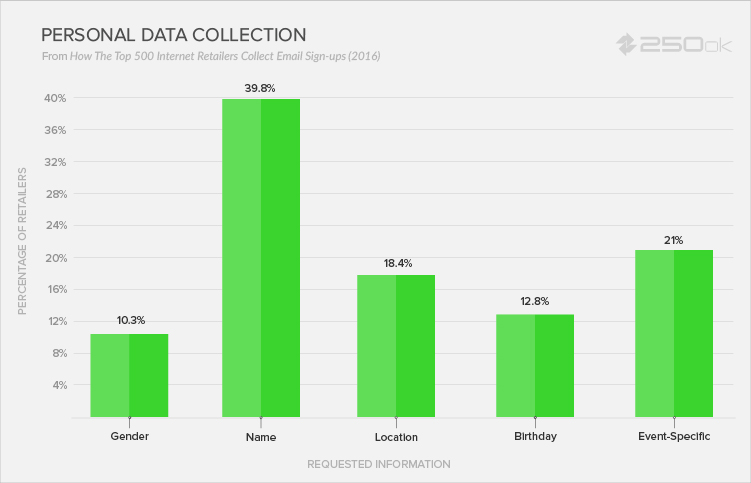
Welcome to How The Top 500 Internet Retailers Collect Email Sign-ups (2016), an analysis of how retailers promote their programs, leverage mobile optimization, use social sign-ups, capture personal data, and more. In addition, we have shared some year-over-year trend insights compared to How The Top 500 Internet Retailers Collect Email Sign-ups (2015). Let’s dig in.
Sign-up Motivation
First, it’s important to consider why consumers sign up for promotional programs from internet retailers.
According to the 2016 Consumer Adoption & Usage Study by Adestra—a survey of 1,251 consumers age 14-67 who live in the United States— most (85%) reported they sign up for discounts or promotions.
According to Adestra’s survey, the most popular types of promotions consumers want are percentage-off offers (35%), free shipping (20%), free trials (14%), and dollar-off promotions (14%).
Our analysis revealed only 38.2% of retailers incentivized consumers to sign up. However, it’s worth noting that compared to last year’s analysis, nearly 10% more retailers offered incentives. The top three incentives made available to consumers were percentage-off offers (22.3%), dollar-off promotions (7.6%), sweepstakes (4.4%), and free shipping (3.9%).
Examples: Sweepstakes as sign-up incentives
Opt-in Placement
We analyzed the location of email sign-up forms or links on retailer websites. The most common placement position is still the footer (83%), with the header (26.2%) and mid-page (2.4%) less prominent. Pop-up placement came in at 32.4%. We discovered nearly half of retailers (48.4%) used two or more sign-up placements.
Surprisingly, on 5.2% of the websites we reviewed, we failed to find an email sign-up. And for those sign-ups we did locate, the sign-up process was broken in 1.1% of those cases.
Examples: Welcome mats
Of those retailers using pop-ups, welcome mats (82%) were the most common. Others used timed or triggered pop-ups (14.3%), while the rest used a scrolling pop-up (3.7%).
Examples: Welcome mat and scrolling pop-up served simultaneously
Pop-up madness? In our analysis, we were simultaneously served a welcome mat and scrolling pop-up only once.
SumoMe performed an analysis of 300 million pop-ups generated by their customers showing strong conversion rates when compared to traditional email sign-up positions. However, we are curious to see how consumer engagement with these disruptive pop-ups, especially in the mobile environment, evolves over the next 12 months, and how retailers react to those trends.
Mobile-friendly Experience
Given that mobile usage at the top 100 digital properties in December 2015, in aggregate, surpassed the desktop audience, we expected a mobile-friendly experience on all websites. Surprisingly, 8% of websites were still not optimized for mobile.
Examples: Websites not optimized for mobile email sign-up as viewed on an iPhone 6
Personal Data Collection
One of 2016’s hottest topics among the Top 500 Internet Retailers is personalization. Personal data collected from consumers can be used to customize their brand experience in a variety of ways. For example, a 2015 Experian Marketing Services study revealed a cross-industry average increase of 29.3% in open rates when using personalization in the subject lines.
Example: Birth date, age, and gender data collection at email sign-up
Our analysis found only 39.8% of retailers asked for a name during a promotional email sign-up.
Other types of data collection included location (18.4%), birthday (12.8%), and gender (10.3%). Some retailers (21%) asked for event-specific details, and a smaller group (8.8%) requested subscribers share their main interests (e.g., books, technology, fashion).
Using Social Sign-up
Social sign-up, or social login, according to Wikipedia, “is a form of single sign-on using existing login information from a social networking or e-commerce service.” There are multiple benefits regularly associated with the use of social sign-up, including a simpler user experience for subscribers, and, for retailers, improved list hygiene and access to additional personal data. Taylor Nelson, growth specialist at social sign-up provider LoginRadius, said, “On average, our customers have seen 40-60% of an increase in conversion rates with some reaching upwards of 130%.”
We discovered nearly 34% of retailers allowed subscribers to use one or more third-party accounts to sign-up for emails. Nine different account types showed up in our study with Facebook (49%), Google (22.6%), Amazon (8.65%), and Twitter (8.65%) leading the way.
Facebook allows marketers to request access to more than 40 types of permissions. Our analysis revealed the most common permissions requested by retailers were for access to the public profile (100%), which can include name, photo, age, gender, and more, and the subscriber’s email address (97%).
The 3% of retailers that failed to ask for the email address associated with a consumer’s Facebook account requested an email address be manually added by the user. It’s our perspective that not pulling an address from Facebook increases the likelihood a user accidentally or intentionally enters the wrong email address. Our assumption is these retailers wanted to give the subscriber the opportunity to confirm their primary email address. Evidently, almost all retailers did not think the risk was worth the reward.
Example: Social sign-up option using Facebook for email sign-up
Example: Facebook permission approval screen resulting from a social sign-up
Other Facebook permissions requested included access to a consumer’s birthday (15.7%), friend list (9.8%), location (3.9%), and likes (3.9%). Less than 1% of retailers allowing for a Facebook sign-up requested access to a subscriber’s education or personal description.
Single Opt-in versus Double Opt-in
This year’s analysis revealed approximately 9% of retailers used a double opt-in, or confirmed opt-in, process with subscribers. Compared to 2015, we observed a 3% growth in double opt-in usage versus last year.
Welcome Emails
A survey by BlueHornet found 74.4% of subscribers expect to see the first email immediately. For many marketers, welcome emails are frequently the best performing messages sent.
In a follow-up study, we will go into greater detail about the welcome emails and email series used by the Top 500 Internet Retailers, but we felt it was important to mention here that 96% of retailers we successfully registered with delivered the first message within 82 hours. Half of the welcome emails triggered immediately (50.6%), with the majority of welcome emails (61.5%) arriving within one hour.
The pre-welcome-email incentive? Instead of the first incentive arriving via email, a relatively low number of retailers are rewarding email sign-ups with an immediate incentive at the point of registration.
Examples: Immediate incentive for email sign-up at point of subscription
Considering the reported consumer desire for an immediate response to email sign-ups, we expect to see an increase in this type of reward in next year’s analysis.
Messaging Techniques
We found a small number of retailers using loss aversion techniques in the email sign-up messaging. This approach appears to be an emerging trend among retailers. We will dig a bit deeper on this topic in next year’s analysis.
Examples: Loss aversion messaging on email sign-up forms

